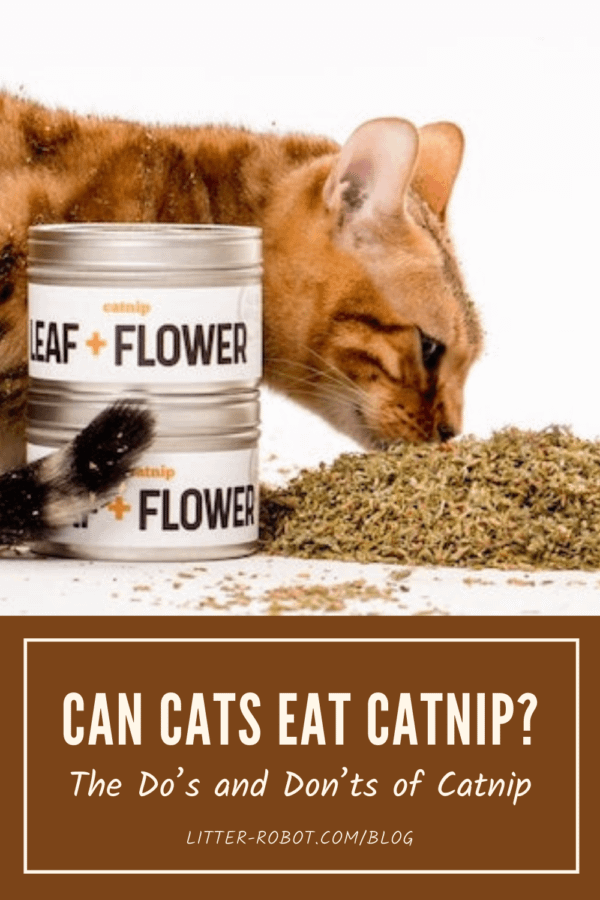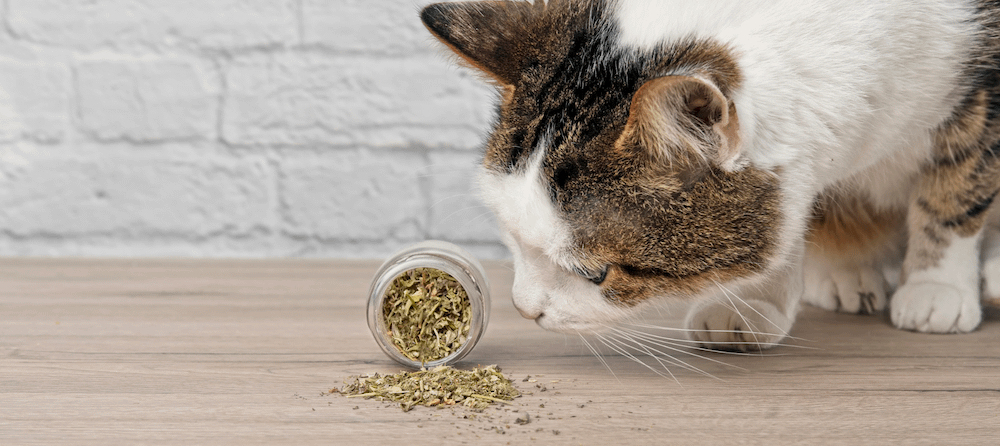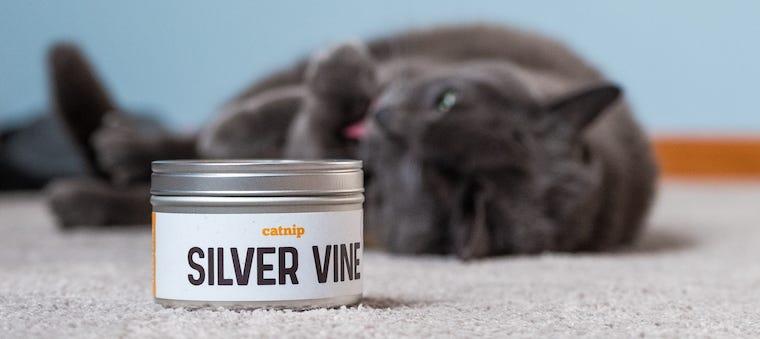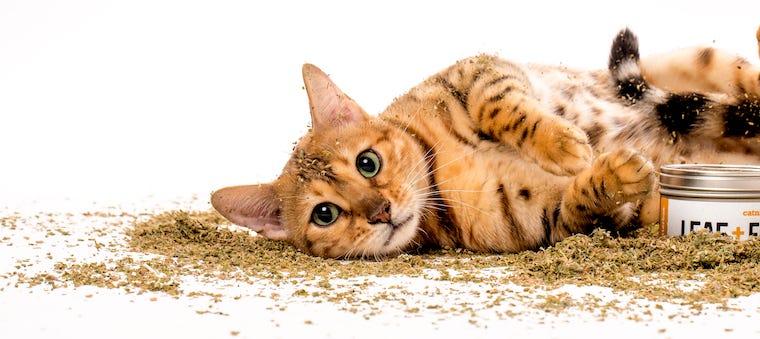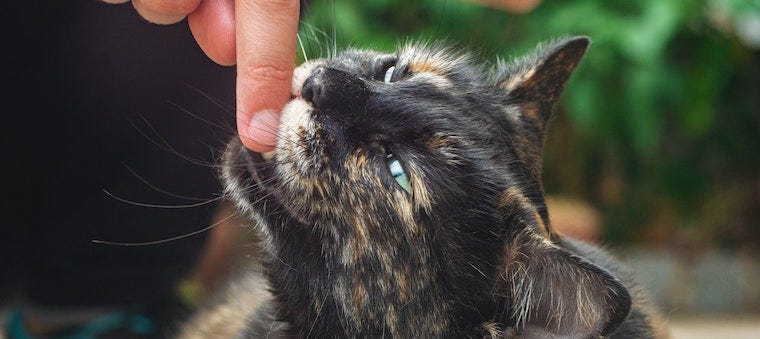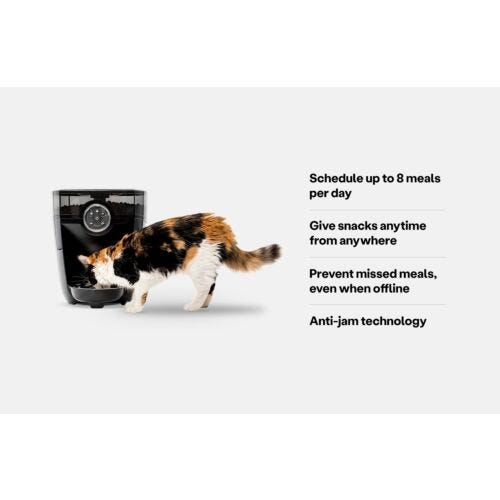While many feline parents are familiar with catnip, you’ve probably asked yourself, can cats eat catnip? Is it safe for my cat? Is it possible to give too much to my cat? If you’re thinking of giving your cat some catnip, it can be helpful to understand exactly what it is and how it can affect your cat.
How catnip works
Catnip is the more common name of the herb Nepeta cataria. This herb is a member of the mint family and contains a chemical called nepetalactone. Nepetalactone produces a psychoactive response in a cat's brain: when inhaled it acts as a stimulant and when ingested it has more of a sedative effect. Plain and simple, your cat becomes high for typically 15-30 minutes. Once the effects have worn off, your cat may not react to catnip again for a couple of hours.
Overall, the effects are extremely variable from cat to cat. You may notice your cat becomes very mellow and quiet; but it’s also possible for your cat to become very excited and playful, possibly even aggressive. It’s important to note that catnip may only work in 50-70% of cats. This means that roughly 30-50% of cats may not have a reaction to catnip at all. This could be a result of genetic factors. You will likely know whether your cat reacts to catnip by the time they are 3-6 months old.
Health benefits of catnip
Catnip can be good for cats. Some health benefits of your cat using catnip include reducing stress and allowing your cat to relax. If your cat reacts to catnip in a playful manner, then catnip can be beneficial in encouraging play and activity.
Another benefit of using catnip is that most pests hate the scent of catnip, and therefore, it doubles as a repellent and can be used to keep mosquitos away. This is important because mosquitoes can carry heartworms and one bite is all it takes to spread that to your precious cat.
Types of catnip
There are different types of catnip that can be used, such as fresh, dried, or sprayed. Some cats prefer dried catnip to fresh. If you have fresh catnip, you may ask yourself, can cats eat catnip leaves? While it is safe to consume catnip leaves, you should be sure to monitor your plant to make sure your cat is not eating too much. Fresh catnip is thought to be easier on your cat’s mouth. However, it is a live plant and will require some upkeep.
How much catnip should you give a cat?
An important question to ask is just how much catnip should you give a cat? While catnip is safe and non-toxic, it doesn’t hurt to consult with your veterinarian before introducing your cat to catnip for the first time. When in doubt, start with a tiny amount and monitor your cat for their response. As with anything, too much of a good thing can become a bad thing: too much can cause nausea and vomiting. Removal of the catnip and allowing it to clear your cat’s system should resolve these symptoms. Additionally, the more often the cat is exposed to catnip, the less of an effect it may have. So, use it sparingly to maintain its efficacy.
It is also important that your cat has a space to relax and/or play when giving them catnip. Introducing cat furniture can be a great way to give your cat their own areas to enjoy catnip.

Best catnip alternatives
If you find that your cat does not react favorably, or at all, to catnip, you can try an alternative to see how they will react. Some alternatives to catnip include:
- Silver vine: This plant is native to China and Japan and contains similar chemicals to nepetalactone, which is found in catnip. Silver vine may cause a reaction in cats that don't react to catnip.
- Valerian root: This plant’s effects are noted to be similar to catnip, but more effective and eliciting a response in more cats. It can be stimulating or used to calm your cat if they are experiencing anxiety.
- Tatarian honeysuckle: This is a plant material that has had some efficacy producing similar effects to that of catnip in some cats. It is safe, nontoxic, not addictive, and makes a great toy for kitties.
Do’s and don’ts of catnip
There are many do’s and don’ts of using catnip. When using catnip with your cat, it is important to remember these helpful hints to keep your cat safe.
Do: Give a small amount
You should always start out with a small amount of catnip when first introducing it to your cat. If you aren’t sure exactly how much to begin with, you can always consult your veterinarian for a recommended amount. Too much catnip can cause vomiting or diarrhea in your cat. Therefore, you should start small until you know how it will affect your cat. Using a self-cleaning litter box like Litter-Robot 4 can help you monitor your cat’s litter box usage via the app, allowing you to identify any irregularities related to bathroom habits.
Don’t: Give catnip too often
Catnip should be given as a treat, preferably a few times per week. If you start giving your cat too much catnip, it can begin to build up in their system and cause their tolerance to increase. This will lead to minimal effects.
Do: Keep catnip in a safe place
We all know cats can climb just about anything. It is important to keep catnip in a safe place that your cat cannot get to.
Don't: Keep fresh catnip around all the time
Most cats will stop ingesting catnip when they’ve had their fill; however, you can’t always trust your cat to know when to stop. We know too much can cause an upset stomach, so keeping catnip in an area that your cat cannot easily access will help prevent them from overindulging.
Do: Give catnip to a cat that likes it
As always, you should monitor your cat once you have decided to introduce them to catnip. You want to gauge their behavior to be sure that they enjoy it. If your cat appears to be enjoying themselves, then continue using catnip.
Don’t: Give catnip to cats that react aggressively to it
Some cats can react aggressively to catnip, particularly if these cats are on the aggressive side to begin with. Monitor your cat when introducing catnip to make sure their behavior is enjoyable and not exacerbating.
Do: Use catnip to encourage play
One way for your cat to enjoy using catnip is to encourage play. You could try introducing products such as interactive toys or climbing towers—for example, this rechargeable laser pointer or the cat furniture by Whisker. These can help your cat burn off that extra energy and provide them with the space needed to relax and play.
FAQs
Is catnip safe?
Yes, catnip is safe and nontoxic. Overall it causes a positive behavioral impact in most cats. It is always important to monitor your cat when introducing catnip to make sure it is something they will enjoy. If they don’t enjoy it, there are other alternatives you can try!
Can catnip be used to change a cat's eating behavior?
While catnip is less likely to affect a cat's eating behavior, it should not be used as an appetite stimulant or depressant. It is possible for it to cause a decrease in appetite due to its mellowing effect in some. If you are looking for something to adjust your cat’s appetite, please consult with your veterinarian.
Can cats get addicted to catnip, especially after eating a large amount?
Catnip is not addictive. However, ingesting too much catnip can cause vomiting and diarrhea and overexposure can decrease its effects.
Sources:
- Catnip: Its uses and effects, past and present
- Feline Fine: The Benefits of Catnip
- Responsiveness of cats (Felidae) to silver vine (Actinidia polygama), Tatarian honeysuckle (Lonicera tatarica), valerian (Valeriana officinalis) and catnip (Nepeta cataria)
